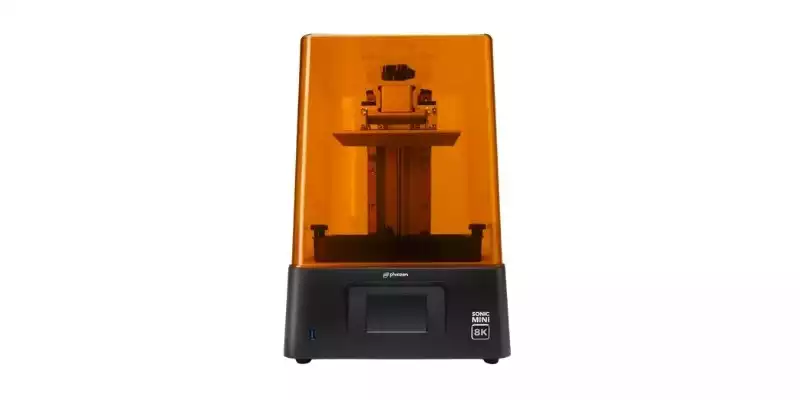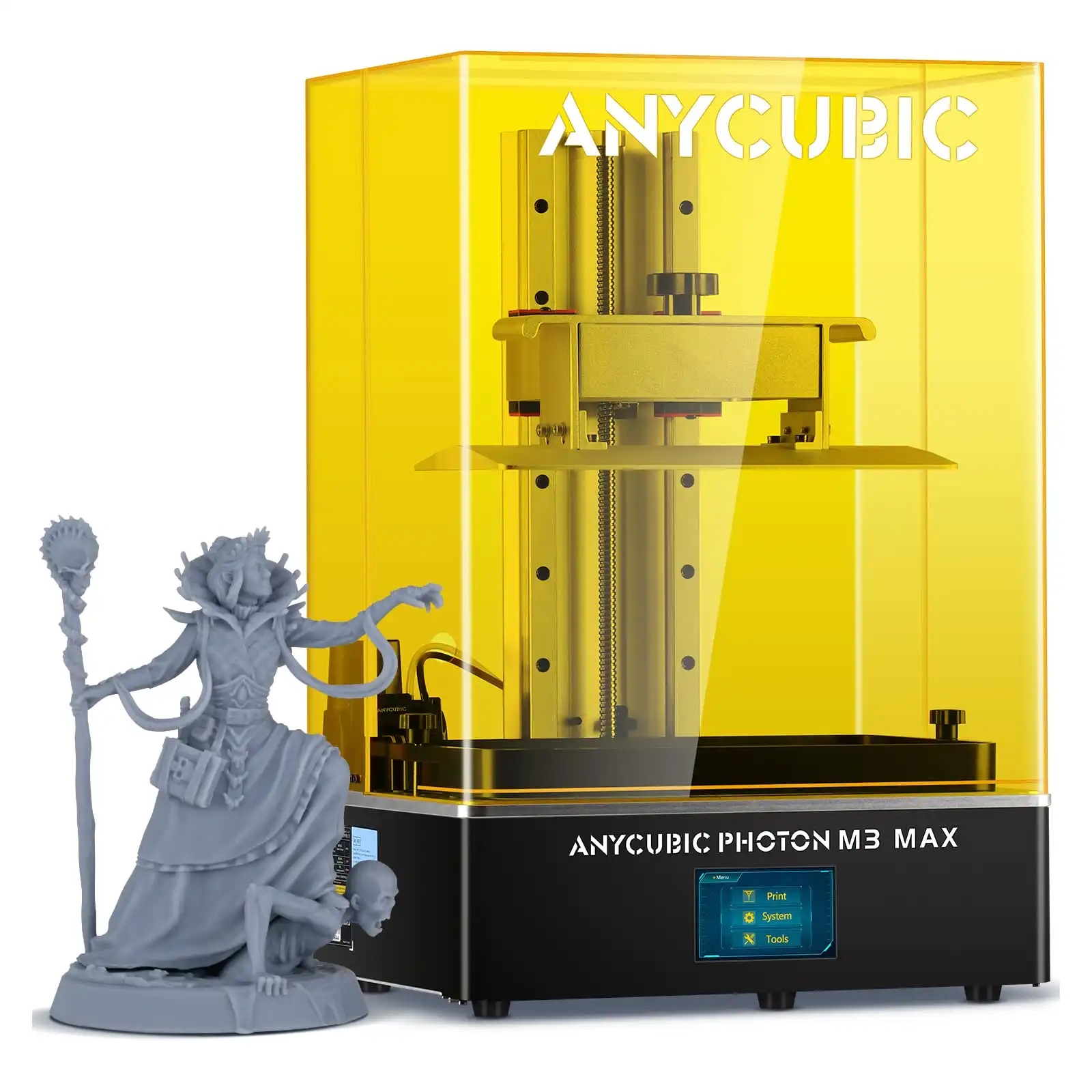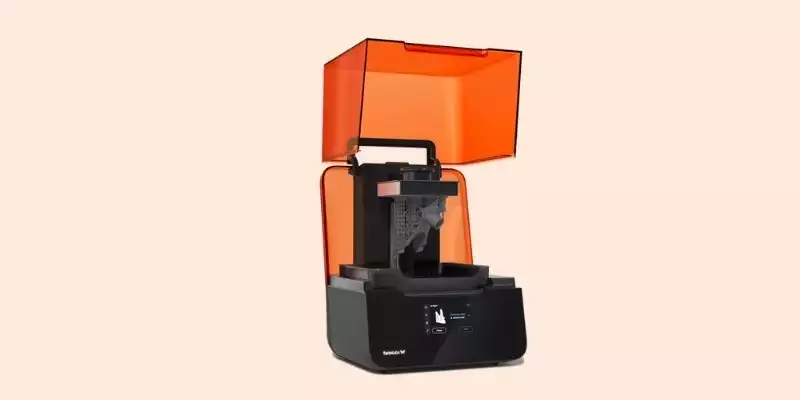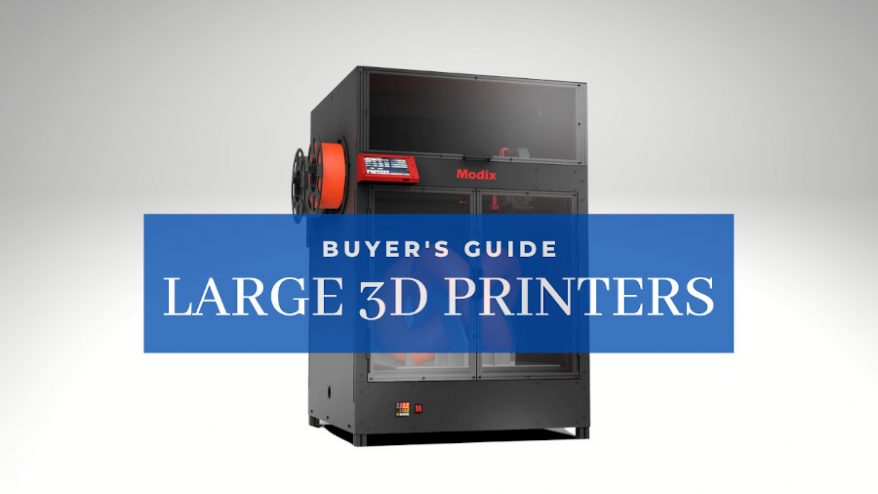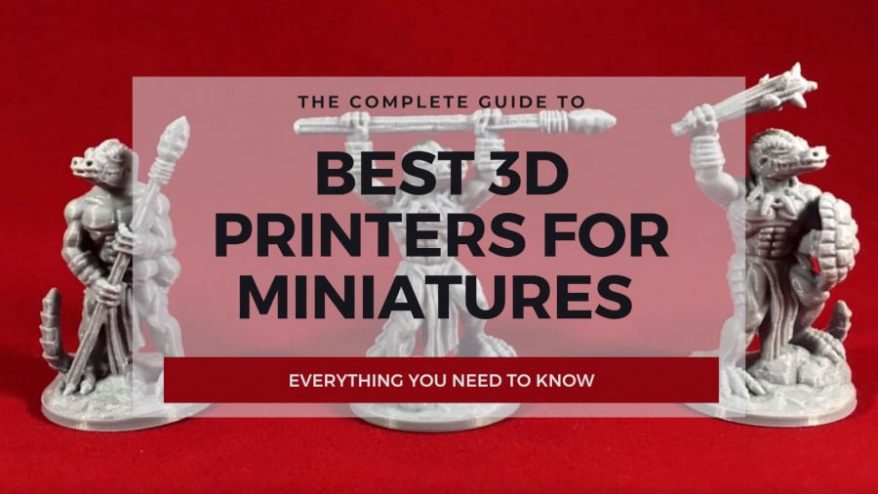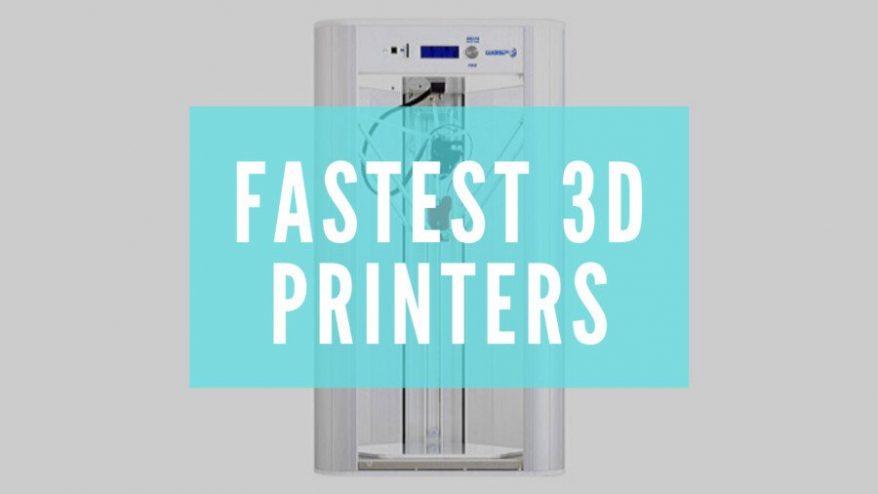Jewelry 3D printers can print high-resolution resin models using castable resins, which can be used to cast the final precious metal ring or other jewelry piece. Incredibly precise XY resolutions and DLP or LCD projector or screen resolutions are essential for this, so we round up our top jewelry 3D printers in each price range:
|
|
|
|
|
4.3
|
4.7
|
4.4
|
|
$699.99
|
$959.99
|
$3750
|
|
|
|
The Best 3D Printers for Jewelry
| Name | Build volume (mm) | Price | Where to buy |
|---|---|---|---|
| Elegoo Mars 2 Pro | 129 x 80 x 160 | $250 | Elegoo here |
| Phrozen Sonic Mini 8K | 165 x 72 x 180 | $699 | Phrozen here |
| Anycubic Photon M3 Plus | 245 x 197 x 122 | $699 | Anycubic here |
| Anycubic Photon M3 Max | 300 x 298 x 164 | $1,049 | Anycubic here |
| Peopoly Phenom | 276 x 155 x 400 | $1,999 | Matterhackers here |
| Formlabs Form 3 | 145 x 145 x 185 | $3,499 | Dynamism Store here |
| Solidscape S325 | 6″ x 6″ x 4″ | Quote | Get a quote |
| Flashforge WaxJet 300 | 289 x 218 x 150 | ~$50,000 | Get a quote |
| EnvisionTEC D4K Jewelry | 148 x 83 x 110 | Quote | Get a quote |
1. Elegoo Mars 2 Pro: Cheapest Jewelry Printer
- Price: — Check latest price at Elegoo here / Amazon here
- Build volume: 129 x 80 x 160 mm
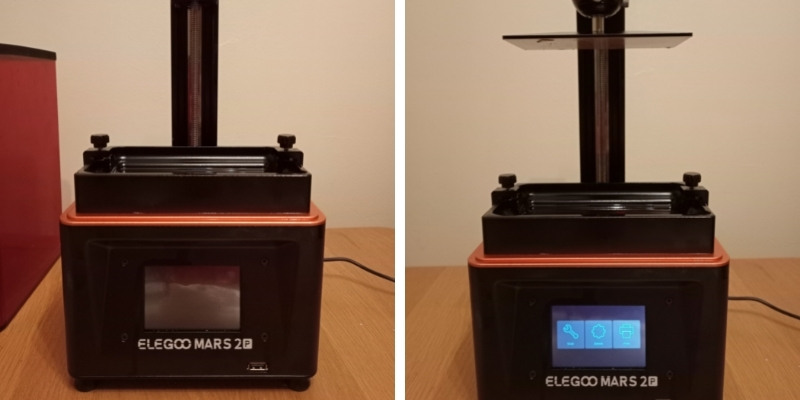
Pros
Great value for great resolution.
Works at quick speeds.
Cons
Newer and high-spec models are available.
Featuring a 6-inch monochrome LCD screen offering HD 2K resolution, the Elegoo Mars 2 Pro offers precise jewelry printing for the price. Rather than DLP or SLA, the Mars 2 Pro uses LCD printing to cure entire resin layers at once, quickening print speeds and able to print at 30-50mm/h.
Other 3D printers for jewelry on this list offer better quality, but for the price the Mars 2 Pro is a great option. It is sturdily built with its CNC-machined aluminum structure for better stability, and the mono LCD is upgraded for improved lifespan to save you money over the long term. It’s one of the best 3D printers for jewelry under $500.
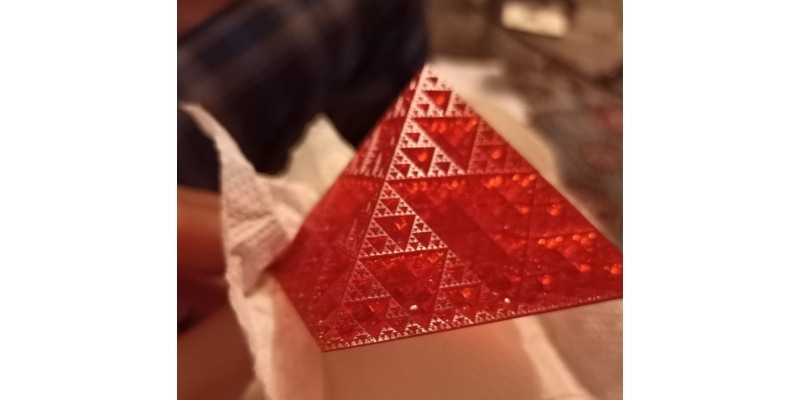
The Elegoo Mars has Z-axis resolutions of up to 0.00125mm, XY-resolutions of 0.05mm, and weighs 6.2kg. It also supports 12 different languages, so if you’re not a native English speaker you can choose your own language.
The video below even shows, from start to finish, how accurately you can make wax models for gold jewelry using a standard Elegoo Mars. Even this standard version produces good quality wax models, and the Elegoo Mars 2 Pro comes with several upgrades on the original.
However, new and better Elegoo printers have since come out, which can create even more precise and intricate jewelry features. If you have the budget, consider upgrading to the Elegoo Mars 3 or Mars 3 Pro for the best resolutions.
2. Phrozen Sonic Mini 8K: Extremely high-quality 3D printer for casting
- Price: Check latest price at Phrozen here
- Build Volume: 165 x 72 x 180 mm
- XY Resolution: 22 Microns
- LCD Size: 7.1”
- LCD Resolution: 8K
- Material Compatibility: Resin
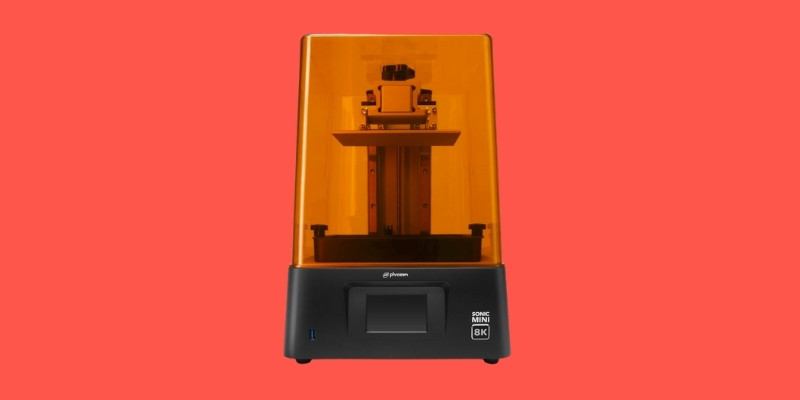
Pros
Unmatched resolution.
Ultra-stable dual linear rails ensure great stability.
User-friendly operation.
Cons
Small build volume for the price.
The Phrozen Sonic Mini 8K is the latest entry to Phrozen’s well-respected line-up of resin 3D printers. Setting it apart from the rest of the Phrozen stable and many other manufacturers is an 8K LCD (7500 x 3240 px) combined with an XY resolution of 22 microns, positioning it as one of the most detailed consumer-grade printers around.
The machine effectively doubles the 4K resolution found on most printers released in the last year or two, offering unparalleled results to satisfy even the most demanding jewelry makers and designers.
This allows you to create feature-rich, highly detailed, intricate parts and models with superb surface finish. For jewelry making, the Sonic Mini 8K can print extremely intricate resin molds for rings, broaches, bracelets, earrings, and much more.
The quality is largely unsurpassed in this price range, and the Phrozen Sonic Mini 8K should be at the top of the list of anyone serious about using 3D printing to create market-ready, production-grade jewelry casts from the first print onwards.
Further enhancing the Phrozen Sonic Mini 8K’s printing abilities is an ultra-stable dual linear rails setup, which ensures superb stability, mitigating print errors, alongside a frosted, laser-cut build plate that promotes fantastic adhesion, even on small parts and models like jewelry.
Finally, the light array is what Phrozen calls a linear projection LED module. Cutting through the jargon, this simply means excellent light uniformity for sharper, more consistent results.
The 165 x 72 x 180 mm build volume is large enough to batch print several casts at once, though it may be a little small for larger businesses. However, it makes up for this with user-friendly operation, and, again, a level of quality unheard of even a few years ago.
We recommend pairing the Phrozen Sonic Mini 8K with Phrozen’s own castable resin, notably the Phrozen Castable Resin W40, Phrozen Castable Resin W20, Phrozen Castable Dental & Jewelry Resin. The printer is compatible with third-party castable resins, but the quality does take a small hit, so it’s best to stick with Phrozen’s optimized resins for the best results.
3. Anycubic Photon M3 Plus/Max
- Price: Varies — Check latest price at Anycubic here / Amazon here
- Build Volume: 245 x 197 x 122 mm / 300 x 298 x 164 mm
- XY Resolution: 34 Microns / 46 Microns
- LCD Size: 9.25″ / 13.6″
- LCD Resolution: 6K / 7K
- Material Compatibility: Resin
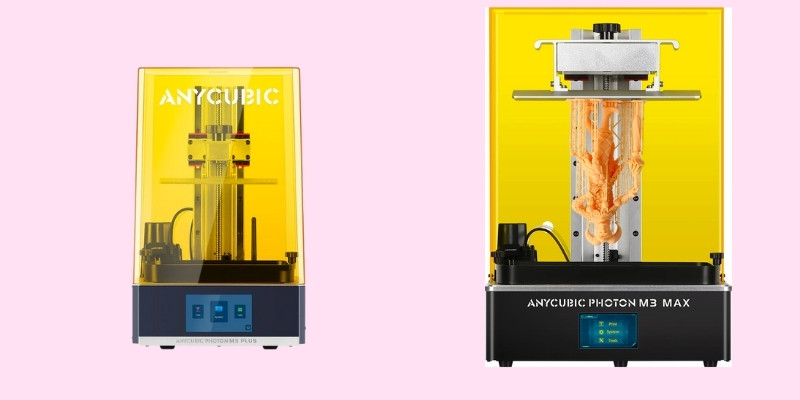
Pros
Large build volume.
Textured build plate offering superb print adhesion.
Fine details and features suitable for jewelry making.
Cons
The fans are very noisy.
With a 6K and 7K LCD resolution and 34 and 46 micron XY resolution respectively, the Anycubic Photon M3 Plus and Max produce high-quality prints stacked with fine details and features suitable for jewelry making.
However, the real benefit here is the large resin build volume compared to many similarly specced and priced 3D resin printers.
The Anycubic Photon M3 Plus boasts a 245 x 197 x 122 mm, while the Anycubic Photon M3 Max expands this to 300 x 298 x 164 mm – some of the largest in the budget resin market.
What this means for jewelry making, given that resin printers cure entire layers at once, is higher productivity: you can produce more jewelry at once, which is ideal for budding businesses looking for a cost-effective printer to kickstart a jewelry-making venture.
Both printers also come with several quality-of-life features that make these very easy to use and master. These include smart resin filing, a laser engraved build platform for superb adhesion, high-precision ball screw z-axis rails, and up to 60-100 mm/h print speeds, so you can prototype quickly and efficiently before committing to a production run.
Though the Anycubic M3 Plus and Max pair well with third-party filament, they work best with Anycubic DLP Craftsman Resin. It’s optimized for precise prints with intricate features, and a perfect resin for jewelry prototyping. It has the added benefit of reducing shrinkage, and has a shorter exposure time to cure than most other resins.
4. Peopoly Phenom: large-scale resin printer for batch printing jewelry molds
- Price: $1,999 — Available on Matterhackers here
- Build volume: 276 x 155 x 400 mm
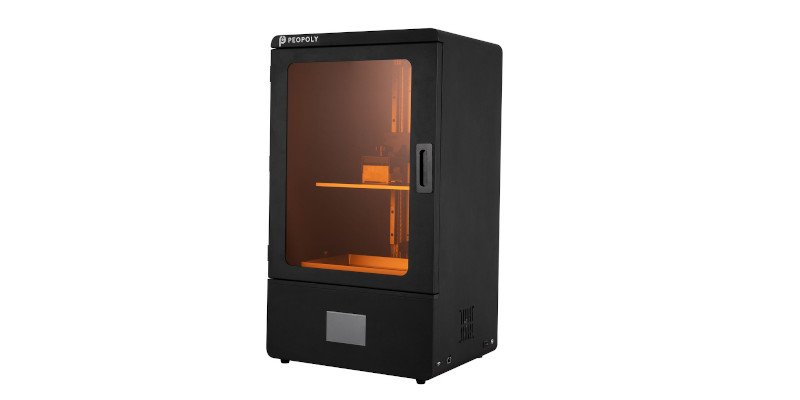
Pros
Large work area for the price.
Super fast bulk printing.
Cons
Loud fans.
The Peopoly Phenom offers truly enormous printing volumes, almost unheard of for a jewelry 3D printer. For jewelers looking to produce many rings or other pieces simultaneously, this larger volume provides space for dozens of wax jewelry models. If you’re in demand for jewelry and want to make as many as possible then this larger build volume is crucial.
With its 4K high resolution projection quality using MSLA technologies, the Phenom produces crisp, accurate and consistent jewelry molds. MSLA takes elements from both LED and LCD technologies, the result being fast, accurate and repeatable jewelry 3D printing.
- The even larger version, the Peopoly Phenom L, is available here.
- For faster print speeds, the premium Peopoly Noir is available here.
The Phenom uses Chitubox resin 3D slicer, useful if you’ve previously used it previously on another printer. Overall, it’s one of the best 3D printers for jewelry, and a great choice for people looking to make large numbers of castable wax jewelry models.
5. Formlabs Form 3
- Price: $3,499 — Available on Dynamism here
- Build volume: 145 x 145 x 185 mm
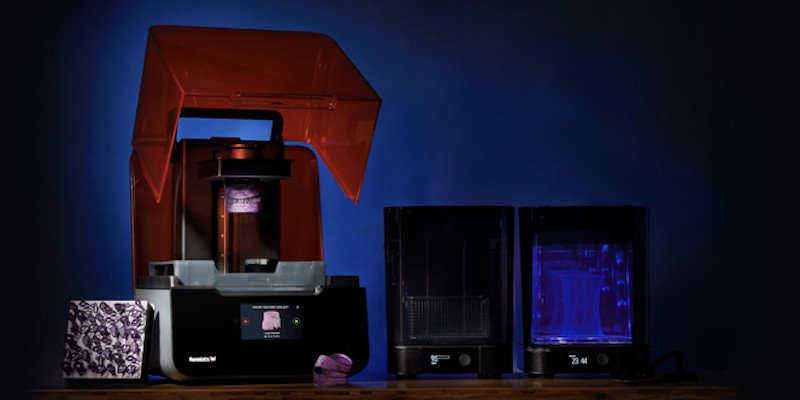
Pros
Extremely fine details and precision, ideal for jewelry.
The gold standard for professional resin printing.
Cons
Small build area.
Seen as the gold-standard in professional resin printing, the Form 3 is capable of fantastic precision, with its new custom Light Processing Unit (LPU) using lenses and mirrors to accurately print jewelry models.
For the price, the Form 3 offers 25-micron resolutions and very consistent and repeatable printing. For those looking for a 3D printer for jewelry able to produce the same design flawlessly again and again, or for producing custom intricate designs, the Form 3 can handle both without issue.
Formlabs make their own castable wax resins designed for jewelry with “crisp settings, sharp prongs and smooth shanks.” Within the Formlabs workflow therefore is a complete jewelry production process for wax models, though the Form 3 also excels as a dental 3D printer and in other industries, too.
The Form 3 resin printer uses Low Force Stereolithography for incredibly precise, high-quality prints ideal for dental, medical devices and jewelry projects.
Enjoy highly detailed prototypes - even if the build area is a touch small.
6. Solidscape S325: best 3D wax printer for jewelry
- Price: Requires a quote
- Build volume: 6” x 6” x 4”
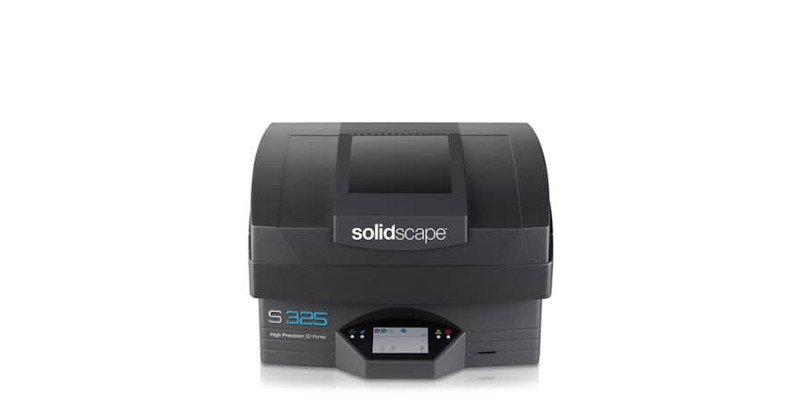
Pros
Designed especially for jewelry making.
Accurate and precise.
Cons
No support for Mac users.
Soliscape make specially designed jewelry 3D printers, so any Solidscape printer you buy is optimized for jewelry printing. Whereas other printers like the Form 3 are designed to excel in a number of industries, the Solidscape S325 is designed with jewelry wholly in mind.
The S325 is the cheapest of Solidscape’s jewelry 3D printer range. It offers great accuracy, material jetting wax models for the precise and effective investment casting of precious metals. Solidscape stress that all their models are castable in gold and platinum, and do not expand or shrink during the investment casting process.
The S325 is capable of 0.001-inch layer thicknesses, with accuracies of 0.005 inches. Overall, as a specialized 3D printer for jewelry, Solidscape have a rich history in jewelry 3D printing and can be trusted to deliver high-quality and precise ring wax models, time and time again.
7. Flashforge WaxJet 400
- Price: ~$50,000
- Build Volume: 289 x 218 x 150 mm
- Layer Thickness: 16 Microns
- Resolution: 1200 x 1200 x 1600 dpi
- Material Compatibility: Flashforge casting wax and dissolvable wax support material
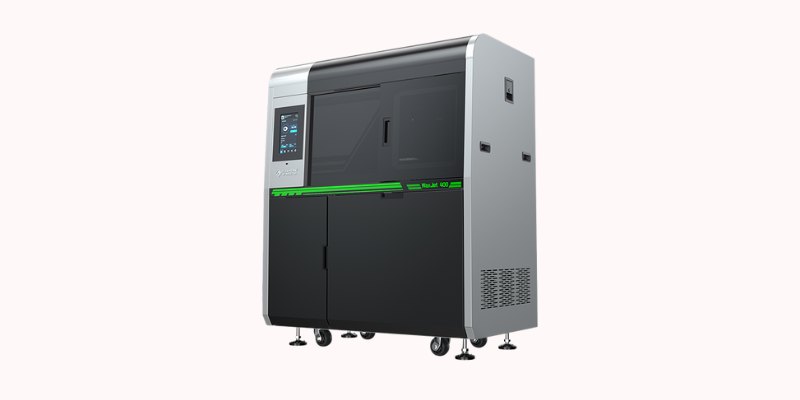
Pros
Great for mass production with great quality.
Fast print speeds.
Cons
Not particularly large.
Unlike most of the other printers on our list, the Flashforge WaxJet 400 is aimed at established businesses for mass production with flawless quality. It employs multi-jet 3D printing technology instead of SLA, vastly improving production speeds, saving time and money, and shortening the time to market.
The machine produces casting wax patterns, not the final end-product jewelry. These casts are used for the final casting process, usually in metals, followed by polishing, stone setting, and sandblasting.
Though the 289 x 218 x 150 mm build volume isn’t particularly large, the printer is designed to work tirelessly at faster print speeds, improving productivity, with the printer able to churn out hundreds of models per day.
As Flashforge notes, the printer can produce up to 10kg of wax patterns in a single month. This is all done at an astounding 16-micron minimum layer height, beating the quality found on SLA resin printers, with high precision, high accuracy, and high detail results.
Due to the use of multi-jet technology, the Flashforge WaxJet 400 is limited to Flashforge materials. But rather than a constraint, these are optimized to make the most of the device’s capabilities.
These include FFWJ1100 and FFWJ1200, both wax-based casting materials, and FFMS3100, a wax-based support material that dissolves easily after the printing process to simplify post-processing, allowing for steep overhangs and clean bridges, even on the smallest rings.
8. EnvisionTEC D4K Pro Jewelry 3D printer
- Price: Requires a quote
- Build volume: 148 x 83 x 110 mm
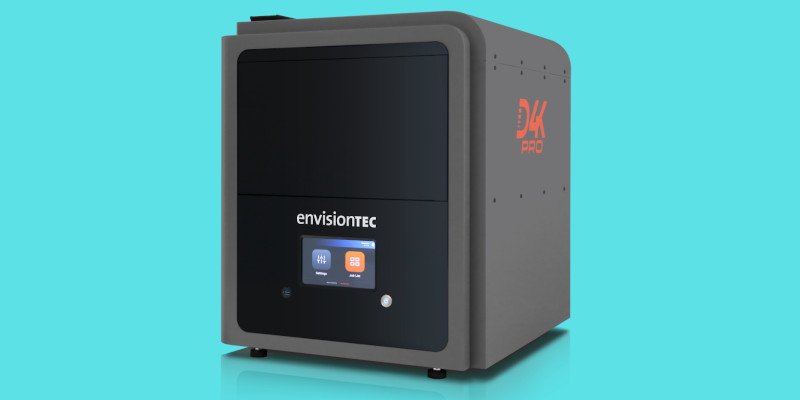
Pros
High-resolution professional-grade desktop 3D printer.
User friendly.
Produces very detailed parts.
Cons
Small build volume.
Described by EnvisionTEC are the highest resolution professional-grade desktop 3D printer, as well as claiming to have the fastest speed, the D4K is well suited to jewelry 3D printing. Speed and accuracy are key to jewelry production, with the printer’s 4K UV DLP projector able to create crisp wax models at speed to be cast into stunning jewelry pieces.
EnvisionTEC are the originators of DLP 3D printing, having pioneered the process more than a decade ago. Now, their advanced D4K Pro can produce accuracies of up to 25 microns in the XY resolution, and 1 micron on the Z axis.
The jewelry 3D printer works well with EnvisionTEC’s WIC100 Series wax material, used to then burn out and investment cast precious jewelry. Though it’s an industrial 3D printer costing over $10,000, larger jewelers will find the D4K one of the best 3D jewelry mold printers.
How To Pick a 3D Printer For Making Jewelry
Resolution
Resolution measures the level of detail a 3D printer can produce, hugely important for jewelry production. A higher resolution 3D printer can produce more accurate models, finer details, better surface quality, and more intricate details – all essential where the final aesthetic quality is so important.
In terms of the casting process, higher accuracy models ensure few issues and errors during the casting process, saving costs on instanced prototyping and batch production for the market.
On an SLA resin printer, we would recommend at least a 6K resolution LCD, ideally 8K, while on a multi-jet printer, anything below 20 microns provides sufficient detail for high-quality casts.
Build Volume and Print Speed
A larger build volume allows for larger individual parts, though this particular usecase doesn’t matter in jewelry making, where parts are small.
However, for batch printing jewelry casts, it’s absolutely key. Larger build areas let jewelry businesses print multiple models at once, an important consideration if your plans include large and frequent production runs.
Resin printers cure entire layers at once, so whether you are printing one model or a dozen, the print times are the same. So, you can print faster because you can squeeze more models into a larger build surface without upping the production time.
Cost
For a decent 3D printer for jewelry making, you can expect to pay upwards of $700, with prices surging to well over $50,000 for professional-grade machines.
As the saying goes, you get what you pay for, so if you are comfortable with a smaller-scale operation (and slightly less precise models), a more affordable printer is a viable choice.
Otherwise, we strongly recommend considering a more professional 3D printer, because more expensive machines offer better overall print speeds, build volumes, workflows, and, therefore, better productivity.
Resin Compatibility
Always check whether a 3D printer is compatible with third-party materials, or tied to the manufacturer’s materials, before locking in your choice.
Most importantly, check it’s compatible with castable resins or wax suitable for jewelry. Not all are (especially cheaper resin printers), which could result in an expensive mistake.
Note that castable resin tends to be more expensive than typical 3D printing resin. But due to the size of the models produced in jewelry making, models are fairly cheap to print.
Can You Use 3D Printer Resin for Jewelry?
Yes, you can use 3D printer resin to produce jewelry, but only with more expensive castable resins, which are designed specifically for lost wax casting.
These differ from standard resin in that they are designed to melt away when heated up, much like wax, the material of choice for traditional jewelry casting. The idea here is that they are used to create plaster molds, melted, then replaced by molten metals to create jewelry.
How Much Is a Jewelry 3D Printer?
Jewelry 3D printers range from entry-level, consumer-grade machines from $700 to $1000, such as the Phrozen Sonic Mini 8K and Anycubic Photon M3, all the way to industrial, professional-grade 3D printers costing tens of thousands of dollars, such as the Flashforge WaxJet 400.
How Much Does It Cost to 3D Print Jewelry
Assuming 1kg of castable resin costs $100, and a 2g average weight of a castable ring, you can print 500 of these rings with 1kg of resin. This calculates the average cost at $0.20 per jewelry print. However, this doesn’t factor in unused resin, failed prints, post-processing, etc.
Further on the saving you money point, this is a video showing how a low-cost Elegoo 3D printer can print accurate enough jewelry wax molds to then cast in gold:
FAQs
Can a 3D Printer Print Wax?
Yes, you can 3D print wax to create casts and molds to bring to lift complex and intricate parts during the casting process. But, nowadays, it’s more common to find hybrid materials like castable resin, which are a little more durable and tougher than wax, but burn off during the casting process just as well.
Related articles you may be interested in:
- Best CAD software for jewelry design
- 3D printed jewelry projects
- Best jewelry 3D scanners
- The best 3D printers for miniatures

